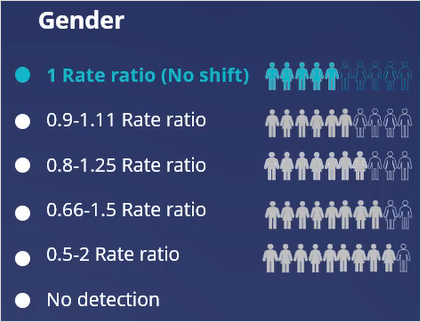
Ethical bias
An ethical bias simulation enables you to test your engagement policies for unwanted bias. That is, you can check if your conditions discriminate based on age, gender, ethnicity, or any other attributes specific to your business scenario. This is particularly useful during the testing stage, while developing and changing actions.
Video
Transcript
This video explains what ethical bias is and how you can avoid unwanted bias in your engagement policies.
Ethical bias testing helps check your engagement policies for unwanted bias. That is, you can test if your conditions discriminate based on age, gender, ethnicity or any other attributes specific to your business scenario.
An ethical bias policy forms the base of an ethical bias simulation. This policy will include the bias fields and the thresholds for each field. You can include any property from your customer class. For instance, age and gender properties are typical properties you might want to include in bias testing.
As age is a numerical field, a Gini coefficient is used to calculate the bias. This is a method of measuring the statistical inequality of a value distribution. A Gini coefficient of 0 represents perfect distribution equality. You can select a warning threshold between 0 (warn if any bias is detected) and 0.7 (warn only if very high bias is detected). You can also choose not to check for bias within a particular business issue.
As Gender is a nominal value, a rate ratio is used to determine bias. A rate ratio is used to determine bias for categorical fields by comparing the number of customers who were selected for an action to those not selected for an action, and correlating that to the selected bias field.
A rate ratio of 1 represents perfect distribution equality. You can select a warning threshold between 1, warn if any bias is detected that significantly deviates from a rate ratio of 1, and 0.50 - 2.00, warn only if very high bias is detected. You can also choose to ignore this bias field for a particular issue in your business structure.
Even though zero bias is ideal, it is not practical to set the threshold at that level, as that would block any actions from reaching customers. Thus, in real business scenarios, a little bias is often allowed to prevent customers from receiving no actions.
This Topic is available in the following Modules:
If you are having problems with your training, please review the Pega Academy Support FAQs.
Want to help us improve this content?

